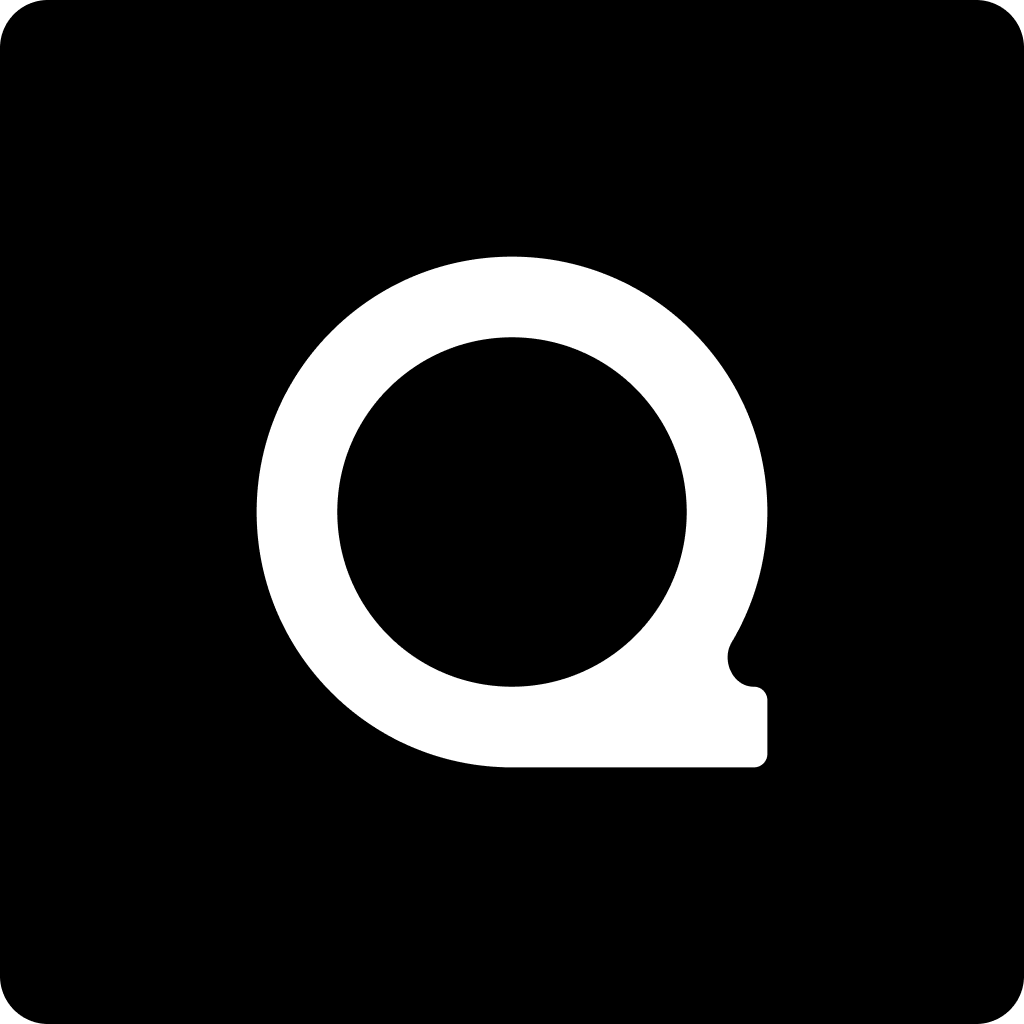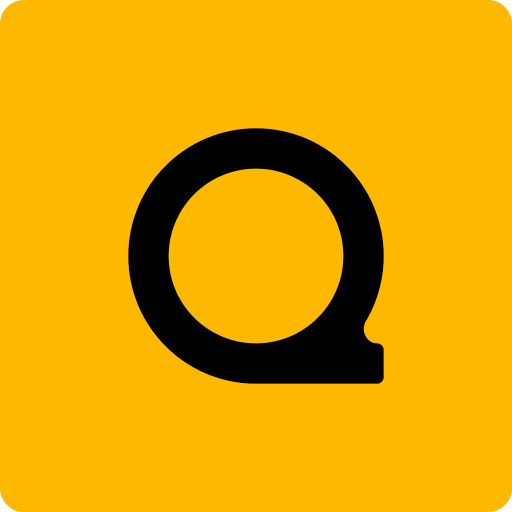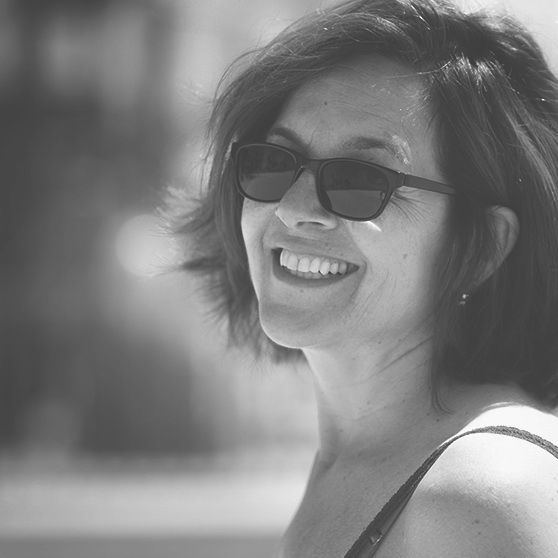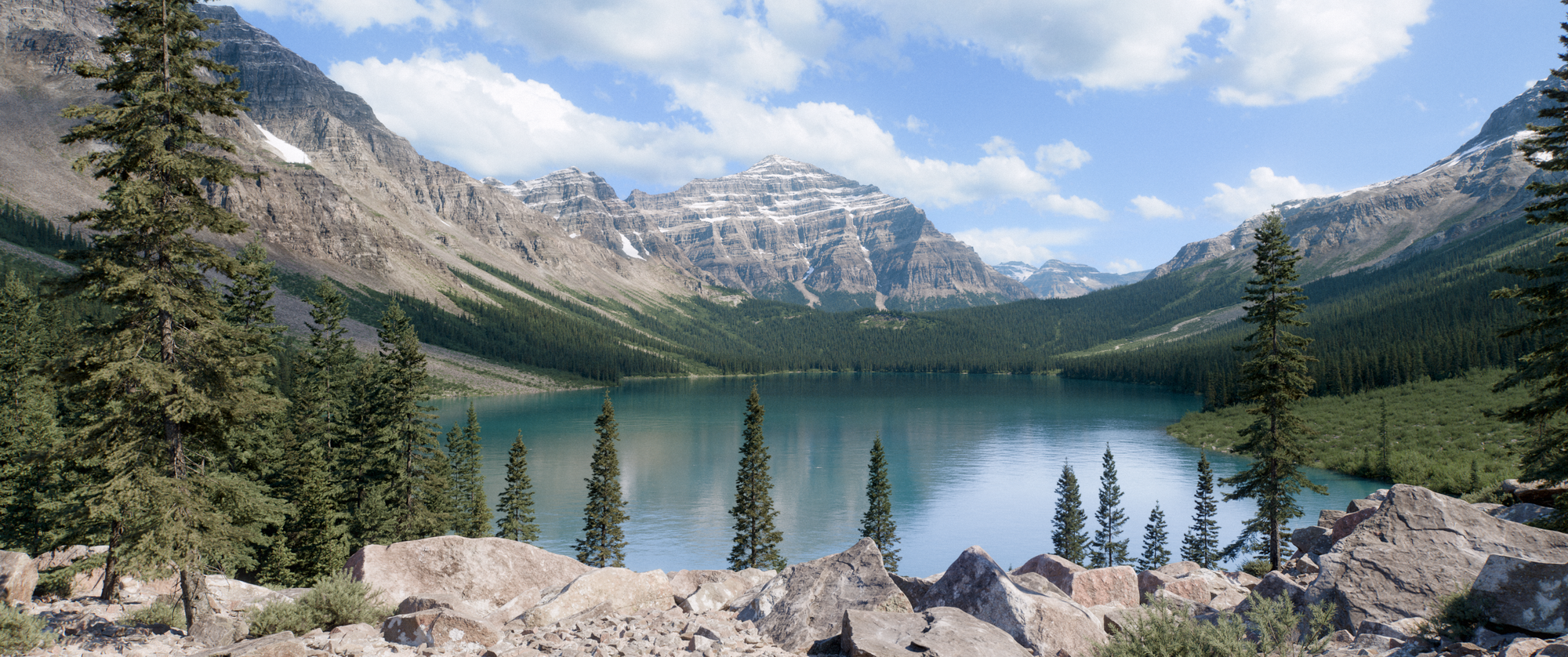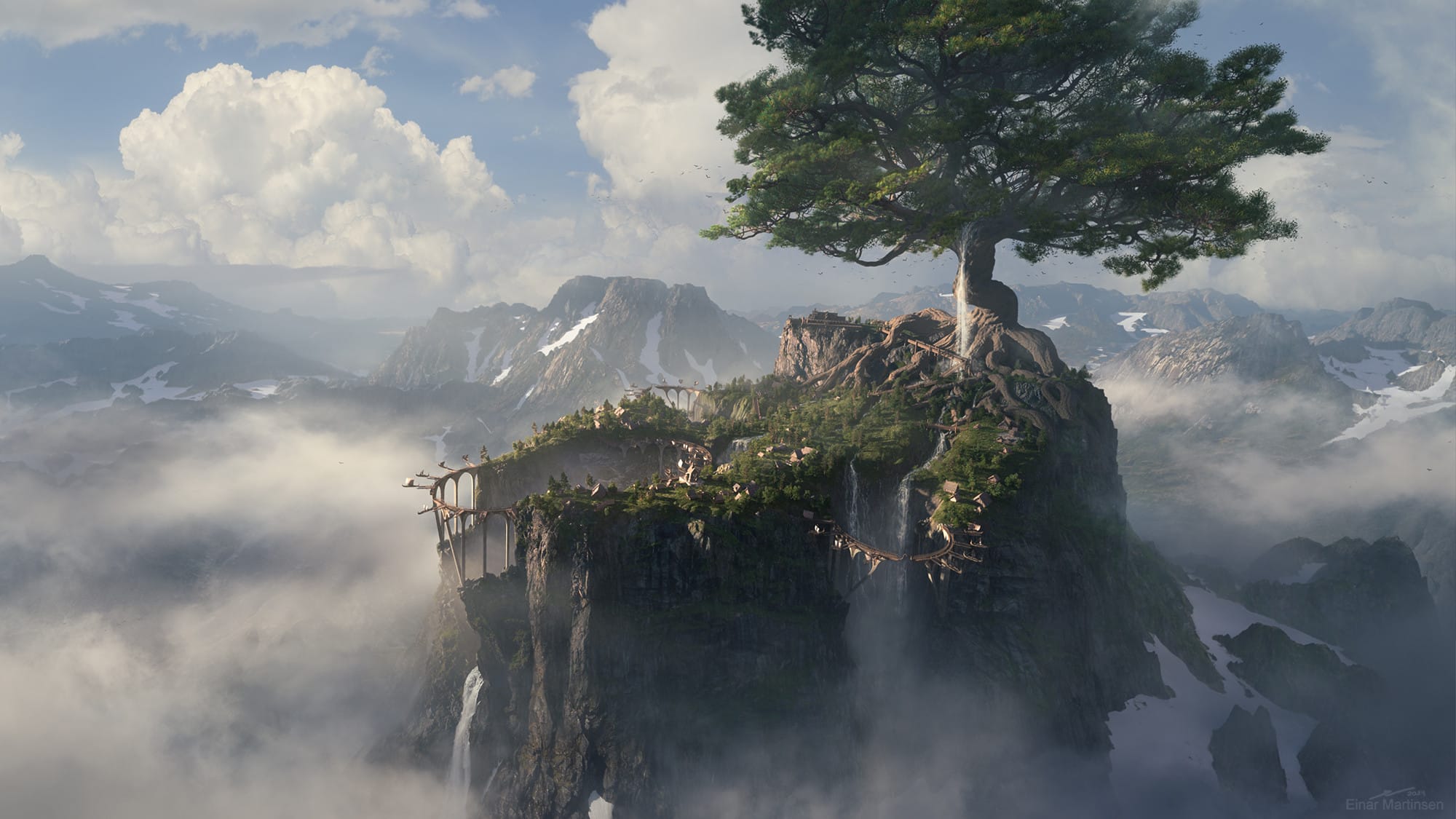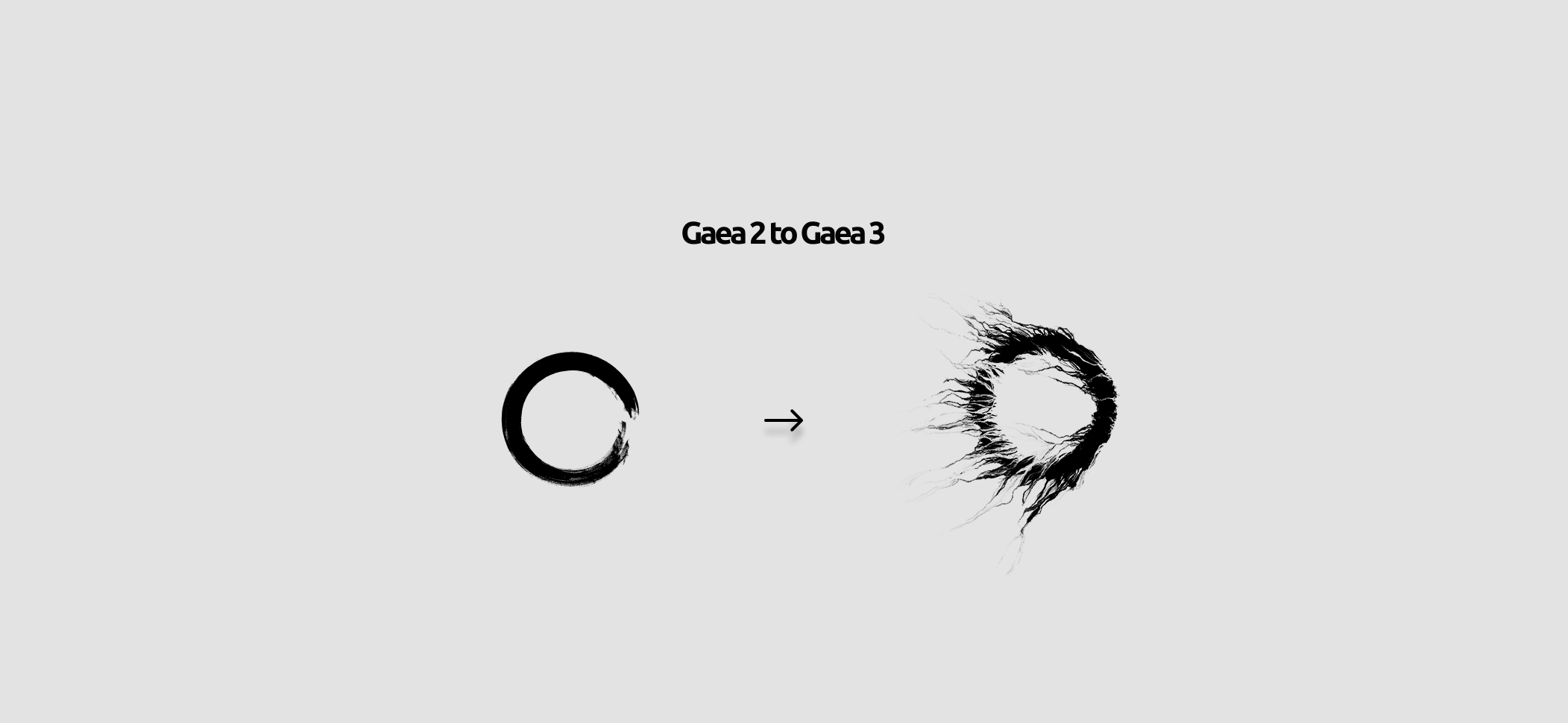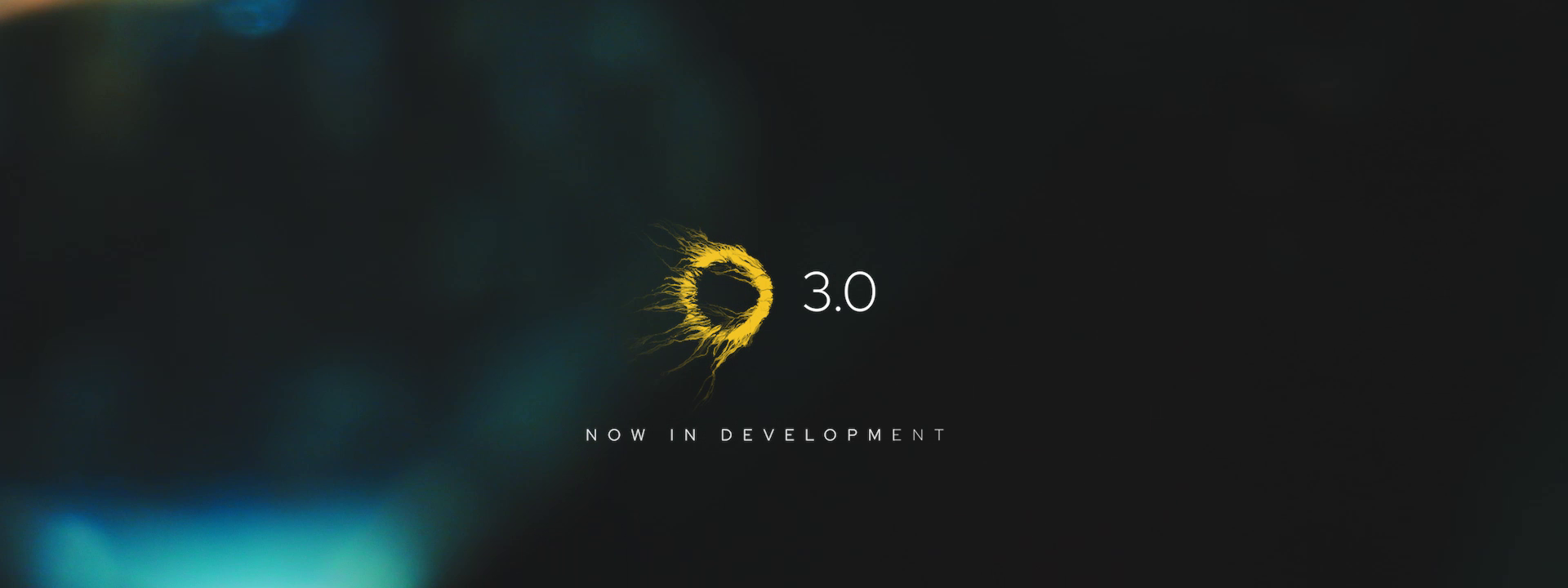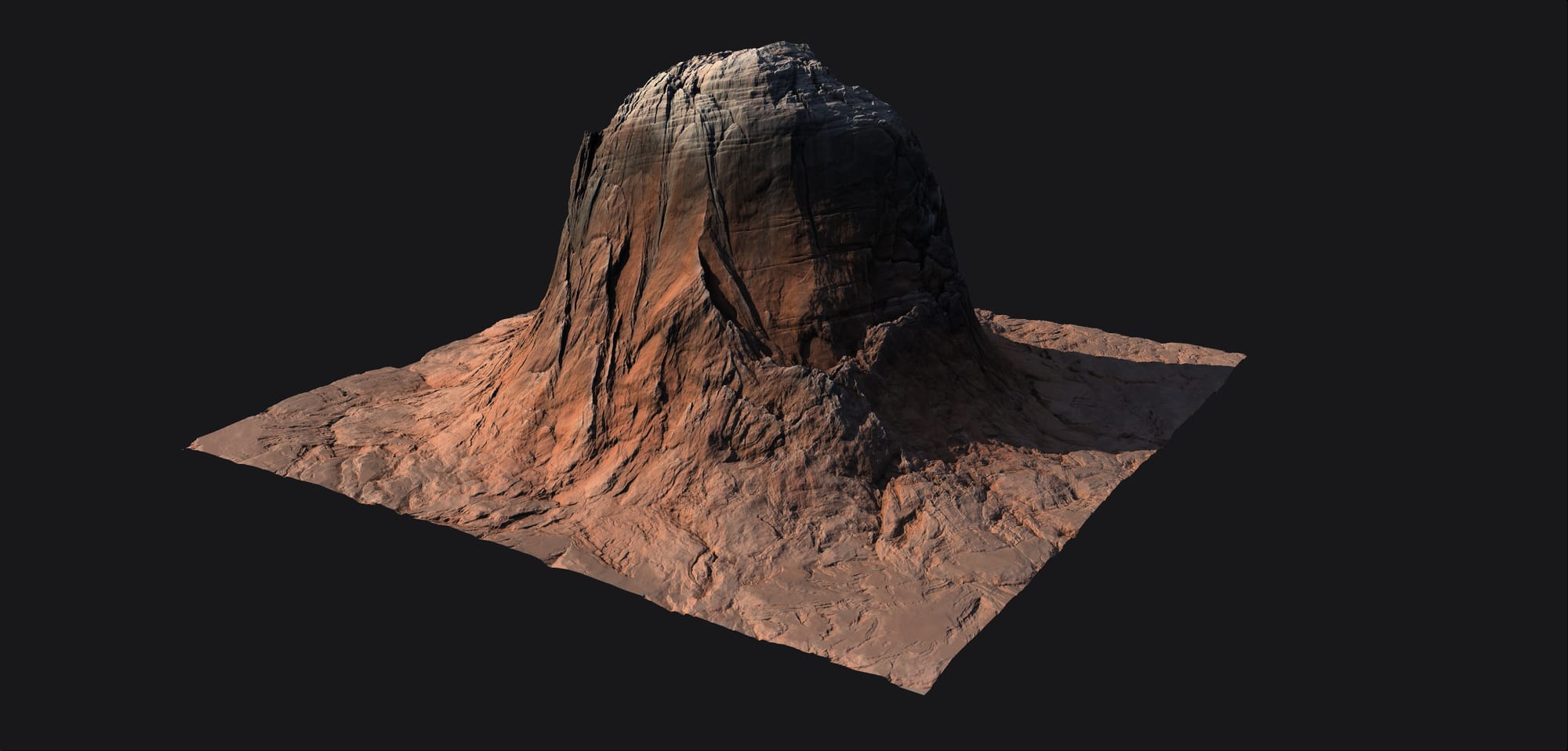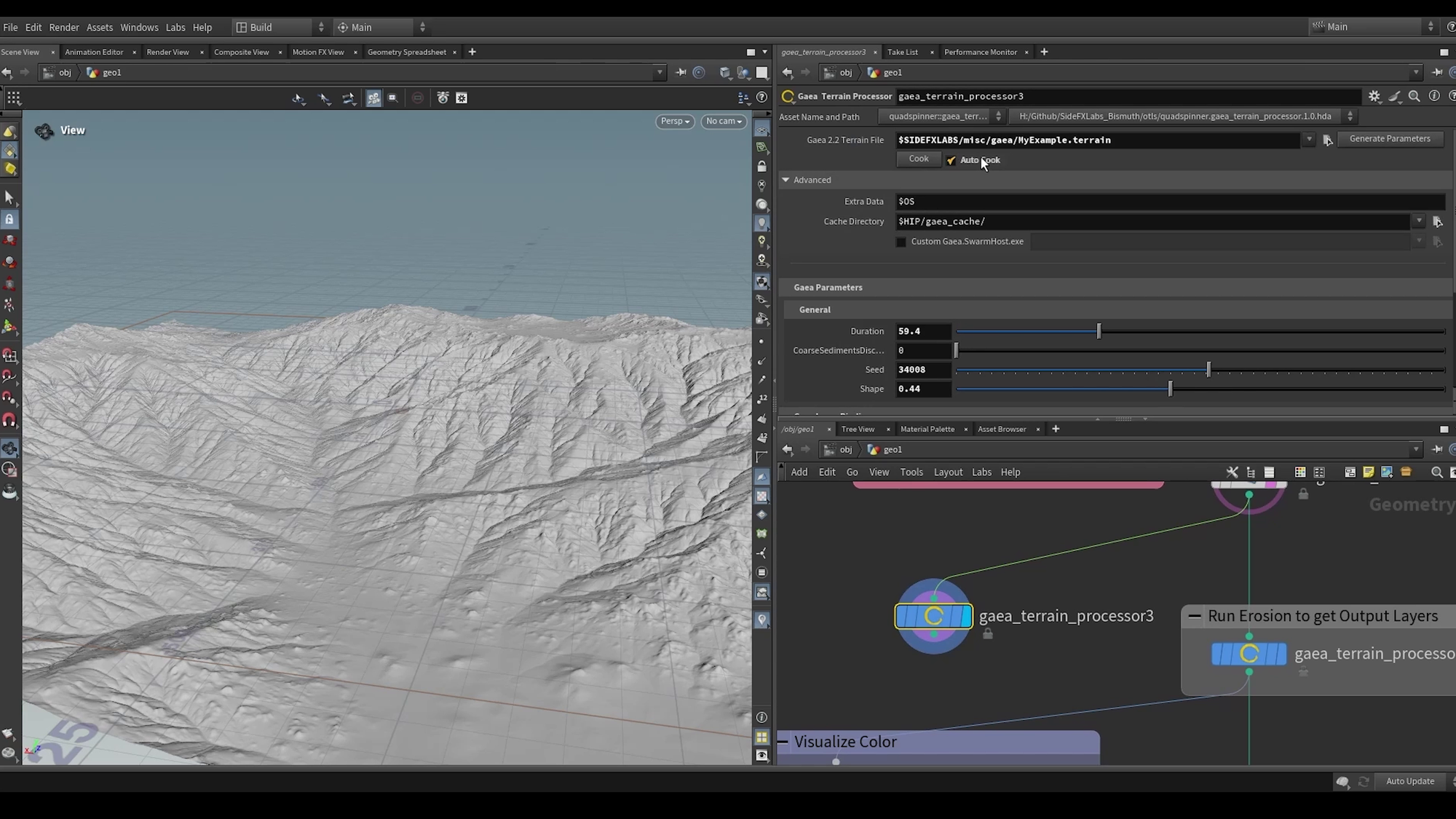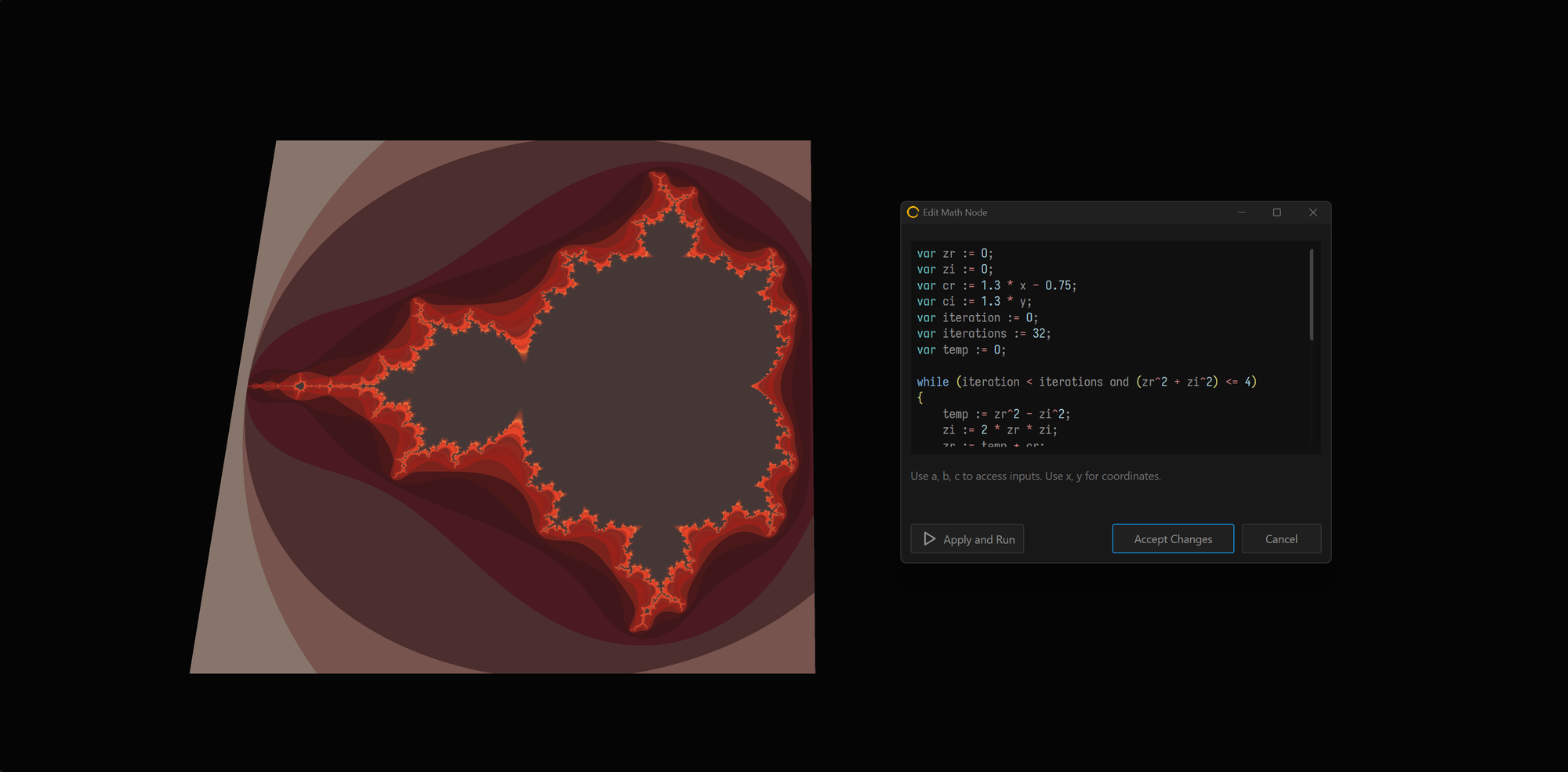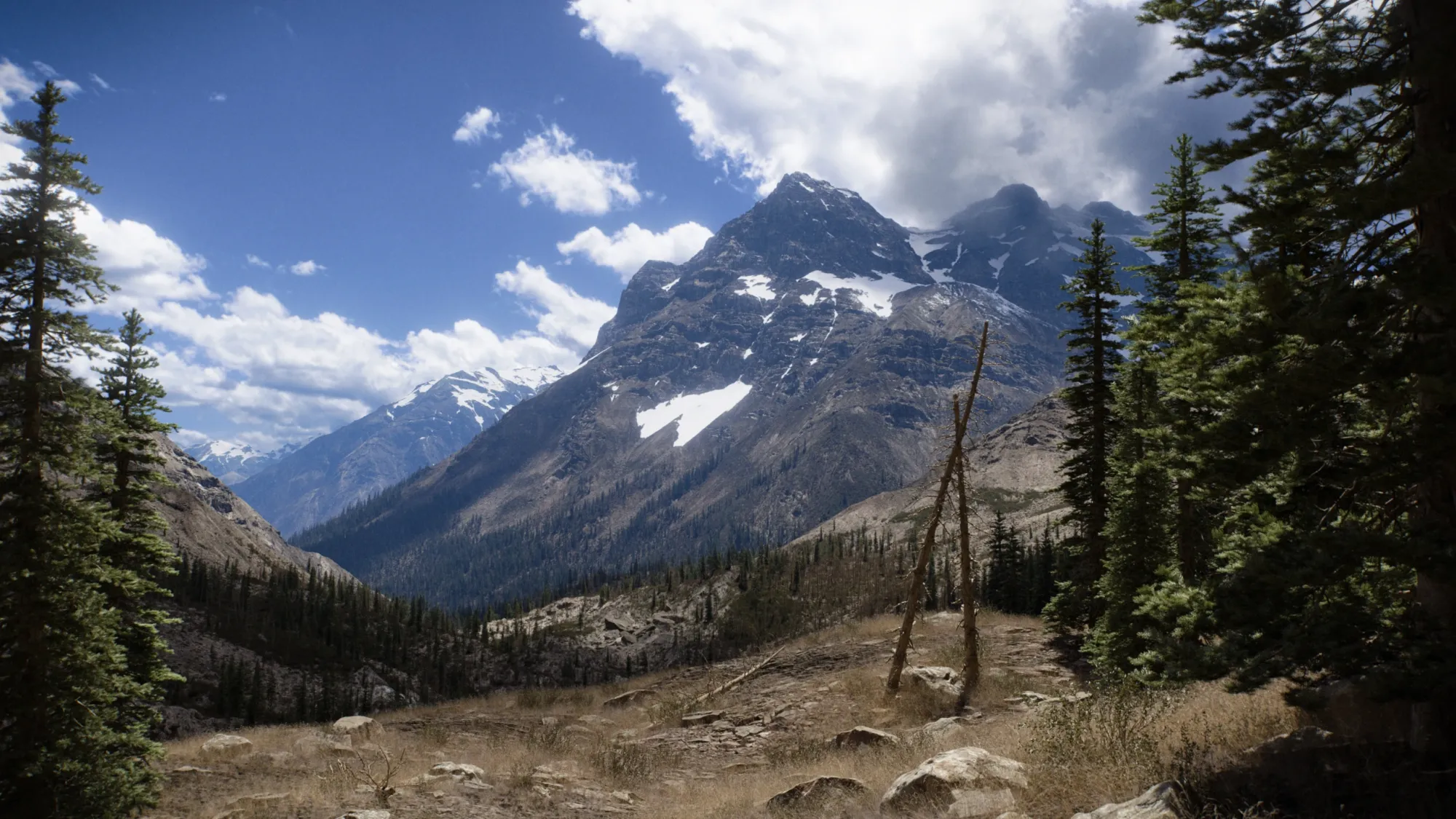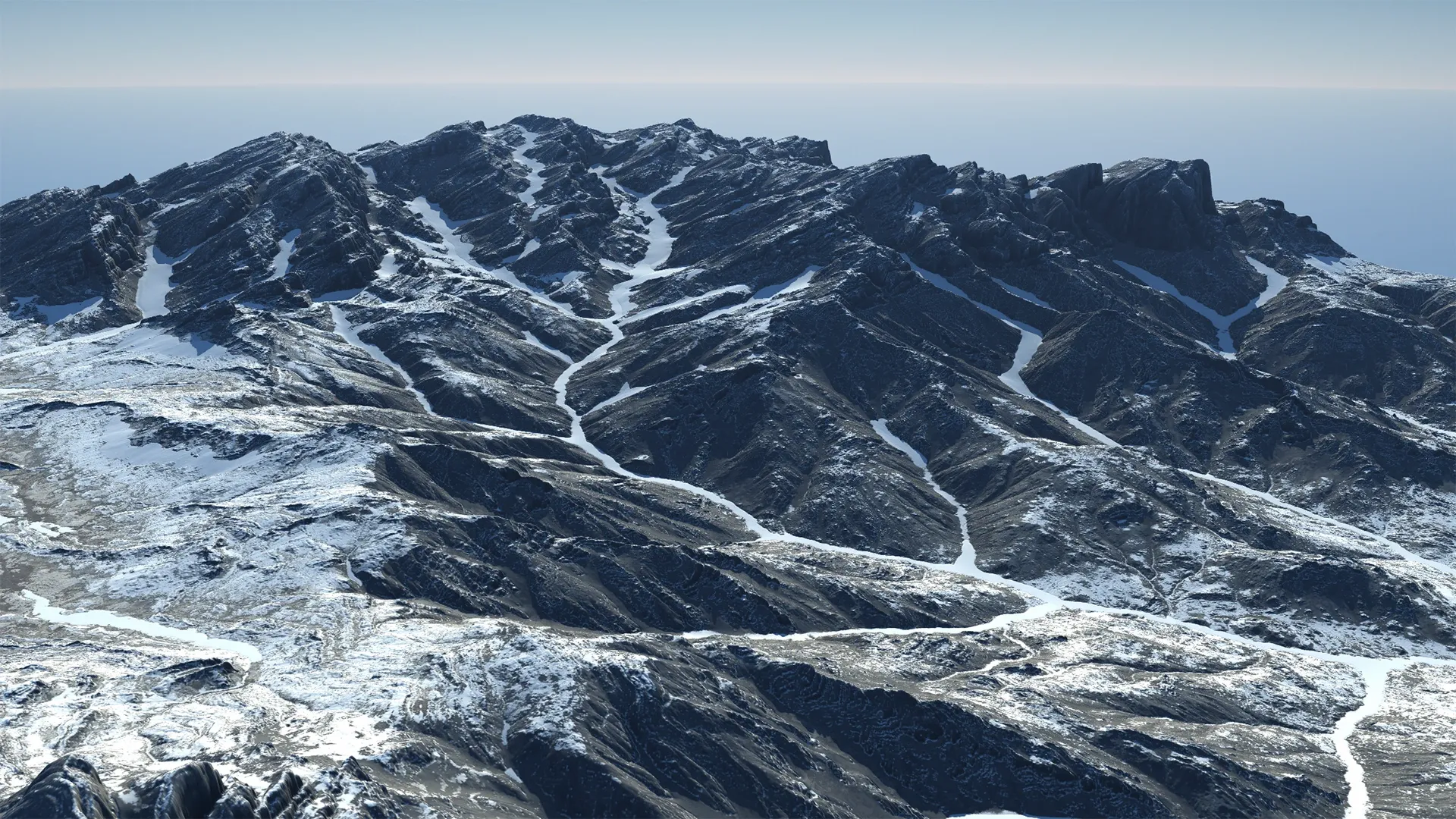QuadSpinner's Cynthia Najim visited with Jenny McElligott about creating environments for NASA missions OSIRIS-REx and DAVINCI, her path to her current dream job, taking risks, and more.
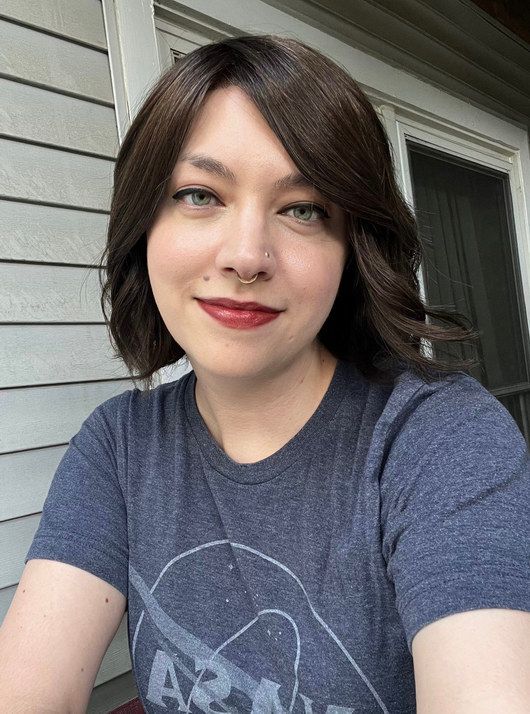
Cynthia Najim: Hi Jenny! We were so excited when NASA Creatives Lead Michael Lentz contacted us about Gaea and introduced us to you. Everyone on our team is riveted by space exploration and NASA’s benchmark work. Knowing that Gaea is in your galaxy helping to shape planetary environments is a pinnacle for QuadSpinner!
Before looking at some of those projects, we’d love to learn more about you.
How did you get started as an artist? Was it one of your early dreams, “when I grow up I wanna be…”? Or did technology draw you in first? Or was it purely space? What were some of those factors that magnetized your educational path and career compass?
Jenny McElligott: Being an artist was unquestionably my end game, even as a kid! I was always drawing horses, parakeets, or Pokémon. I grew up in the D.C. area with access to the wonderful free Smithsonian museums. Because of those visits and inspiring exhibits, space and dinosaurs were always on my radar as a little girl. So initially I thought I’d be a paleontologist. Then in middle school that evolved into wanting to work on films as a VFX artist. Within a year I saw Revenge of the Sith in theater, and then Lord of the Rings. Those films absolutely changed the trajectory of my life and the colleges I’d be applying to a few years later.
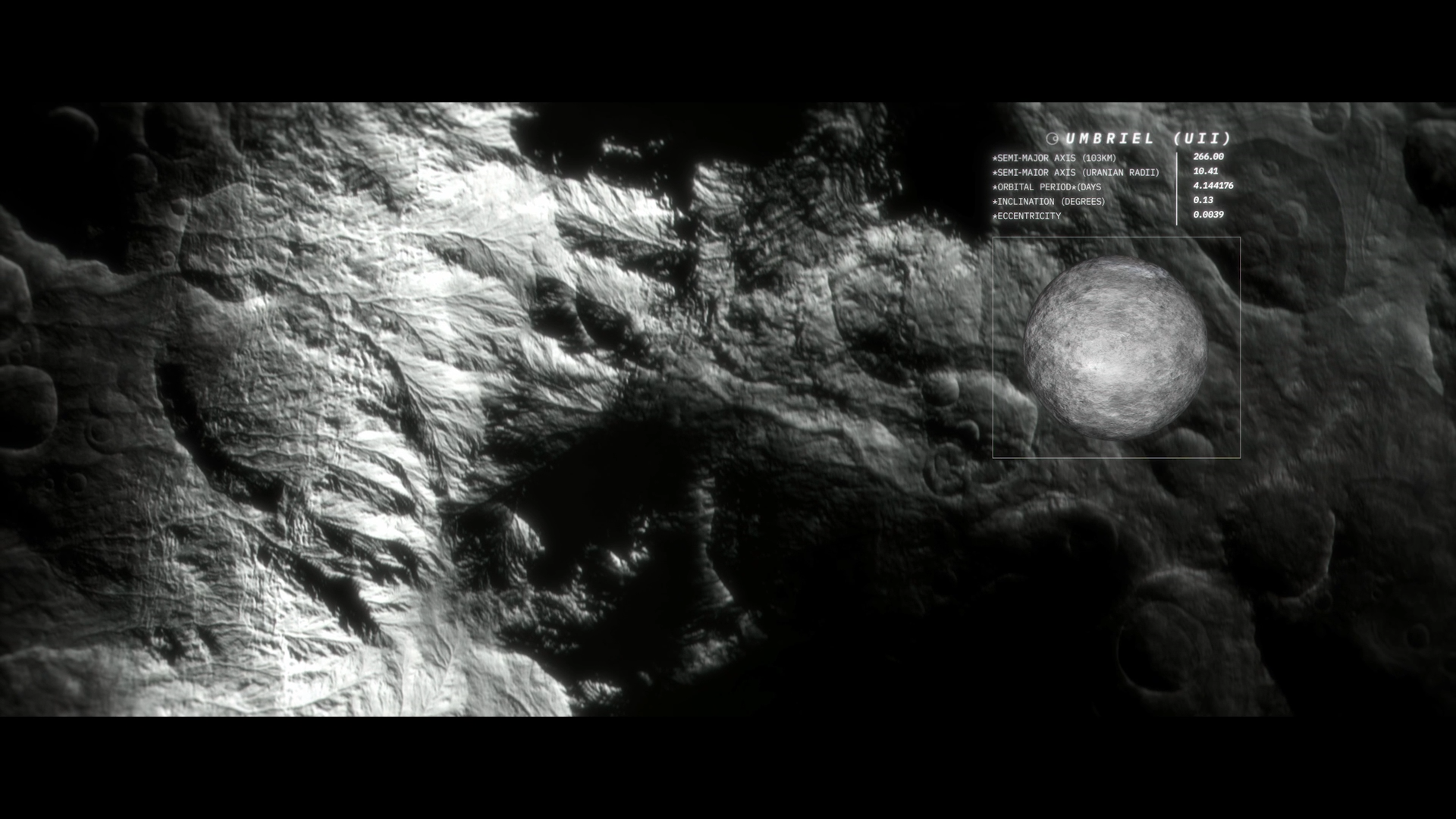
Cynthia: Did you meet a lot of like-minded people (mentors, colleagues, friends) along the way? Or did you go down a worm hole, so to speak, in more of a solo pursuit? And how did being a woman in a largely male-driven industry affect you?
Jenny: Speaking to my pre-NASA career, I have always had very supportive nerdy friends, even if they weren’t all artists of the same medium. Many people in my life (professionally or on the side as a hobby) are musicians, illustrators, dancers, etc. Most of my art career in college and post grad has been a bit more of a solo pursuit! I didn’t hang out with too many VFX majors during my college time at SCAD (Savannah College of Art and Design). I’m an introvert who does her best work with music blasting, going down a rabbit hole of experimentation.
I feel like my time at NASA these past 3+ years has been fulfilling in an entirely new way. The team I work with (the Conceptual Image Lab at NASA Goddard) is tightknit, inspiring, and creative. It’s been so refreshing to have people to bounce off ideas with, play and experiment with, and be inspired by. I also think it’s a rare thing to have so many cool people on the same page, united in making really cool and innovative art that educates and inspires.
As for being a woman in a male dominated field, I felt that much more when I worked in a woodshop for a few years. In many ways, I felt like I was held back from leveling up my skills because upper leadership was too busy to invest in me. Or I’d have to deal with a customer who was angry that a woman made the product, even though I made it clear from first concept to proof to production, that I was working on that sign/award/bar top etc. At NASA, I’ve never felt singled out or unsupported and that’s been a huge weight off my shoulders.
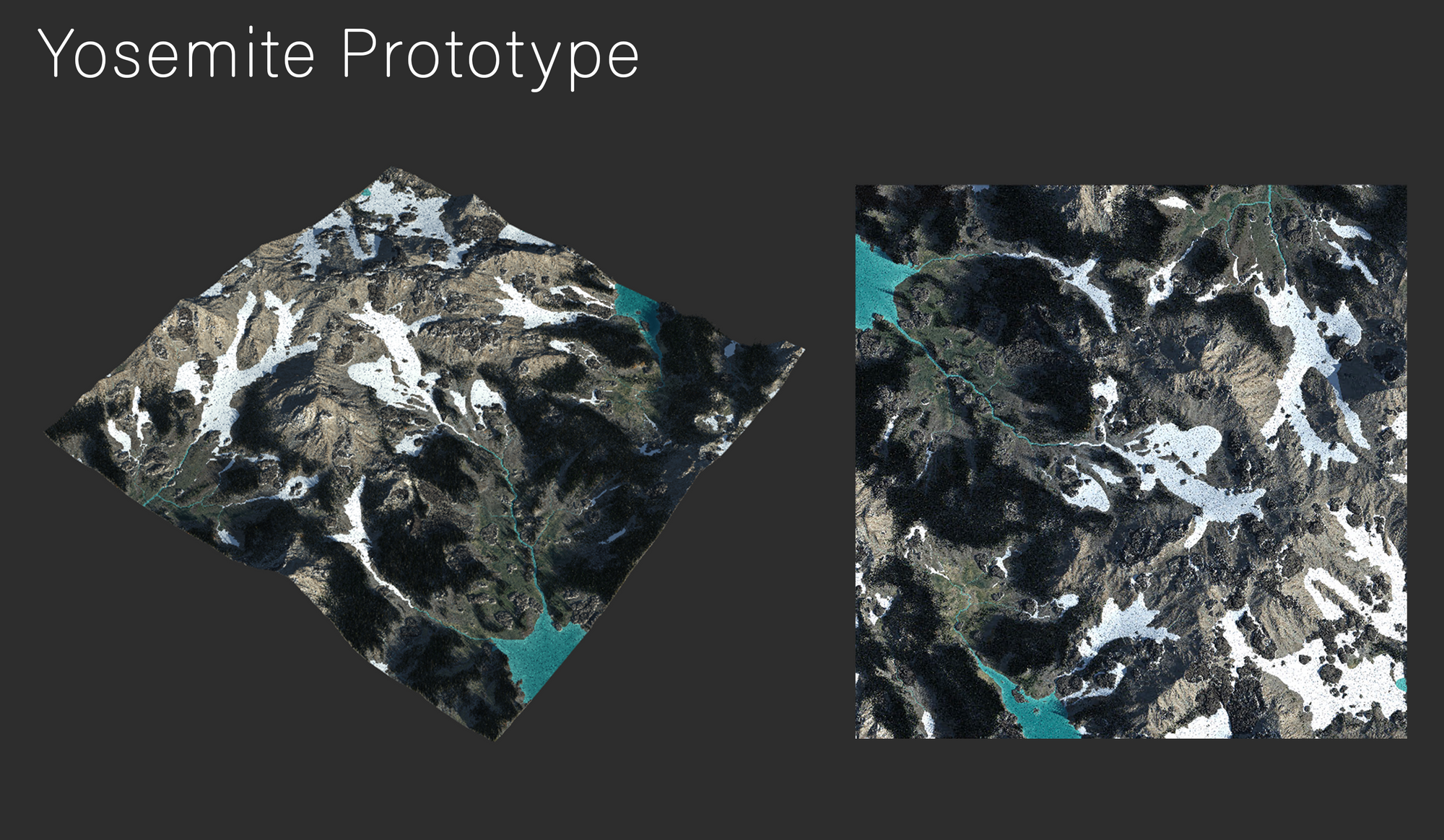
Cynthia: Your skillset is so varied. How do you describe yourself? Which talents come most naturally to you? And which did you have to dedicatedly study to master?
Jenny: I’m always learning and love to be a jack of all trades. As I worked on OSIRIS-REx (the first U.S. mission to return an asteroid sample from space), I took on the mantle of being our lab’s environment artist, which is usually how I describe my role to people. I had to study a lot, but I really took to Gaea. I think it came to me pretty naturally. At the same time during the O-REx mission, I was also learning how to use Adobe’s Substance programs to make my own textures. This has really come in handy with my environment work, as I often need to make planetary textures from scratch with varying degrees of reference available. As someone who puts this all together and animates in Unreal Engine, writing blueprints for specific events and coding within them is something I have to study harder because it doesn’t come as naturally.
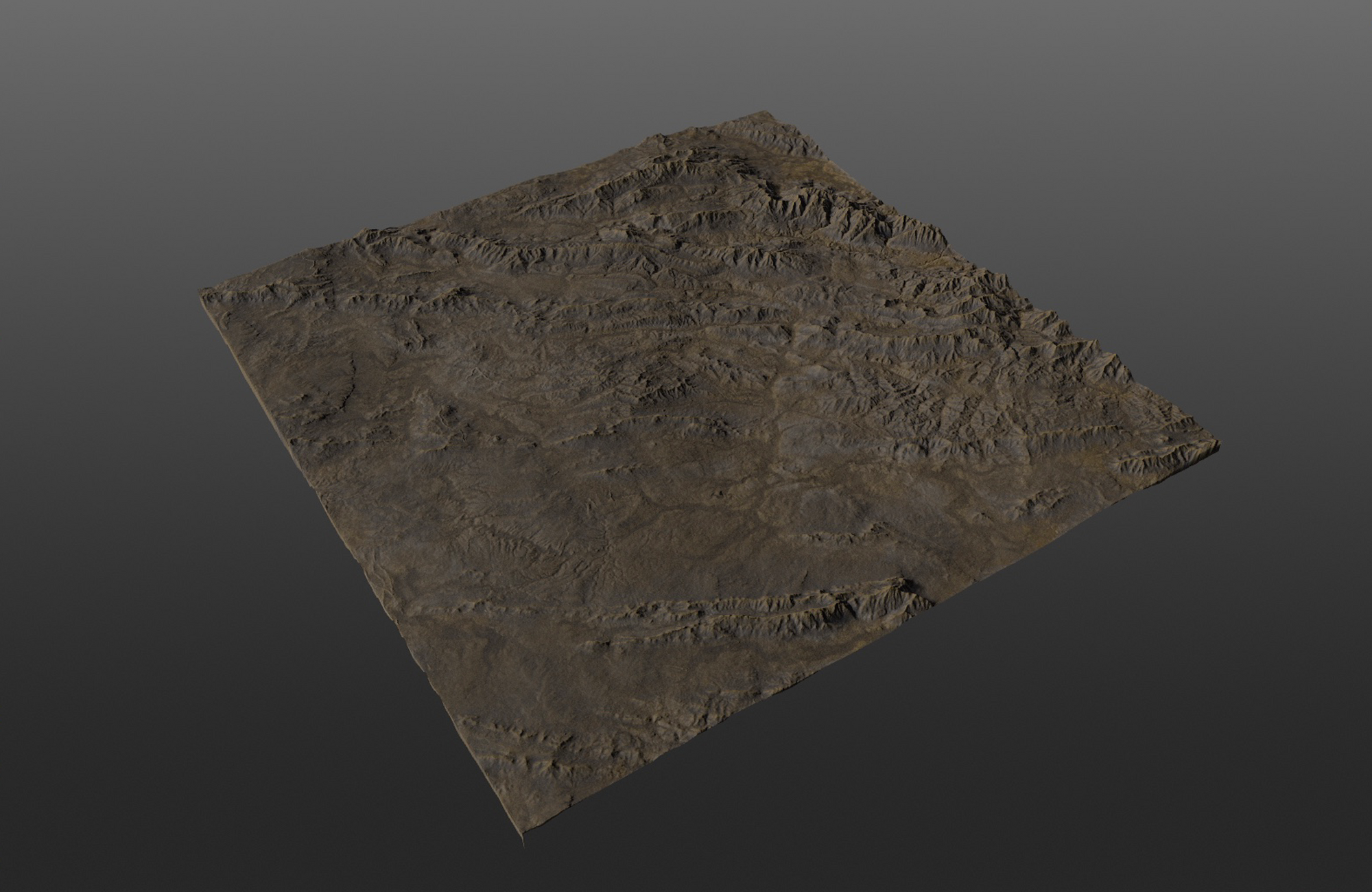
Cynthia: What led you to your current position with the Conceptual Image Lab? The competition must have been fierce, given that NASA is the big league. What has been your biggest learning curve in a top government agency and your greatest reward? What would you advise others who are eager to break into that sphere?
Jenny: My trajectory to NASA was quite nontraditional! I graduated with a B.A. in Fine Arts from Virginia Tech and my first summer out of school I worked in housekeeping at Philmont Scout Ranch BSA near Cimarron, New Mexico. My then-boyfriend, now husband, was working in the photo lab. He convinced me to come out and have an adventure with him. After that incredible summer, I was working as a graphic designer-laser operator-carpenter for a few years. I was happy to be using my art degree, but it wasn’t my dream role.
Fortunately, my portfolio with over a decade of Adobe Suite experience and my nerdy personality were enough to get me in the door at NASA, even though I wasn’t coming in as a traditional animator. I’d say the hardest part is adjusting to new procedures and catching up on the volumes of acronyms! I got this role by reaching out, making connections at Goddard, and asking people in the agency about job openings and advice. It might be scary, but you never know who might say yes.
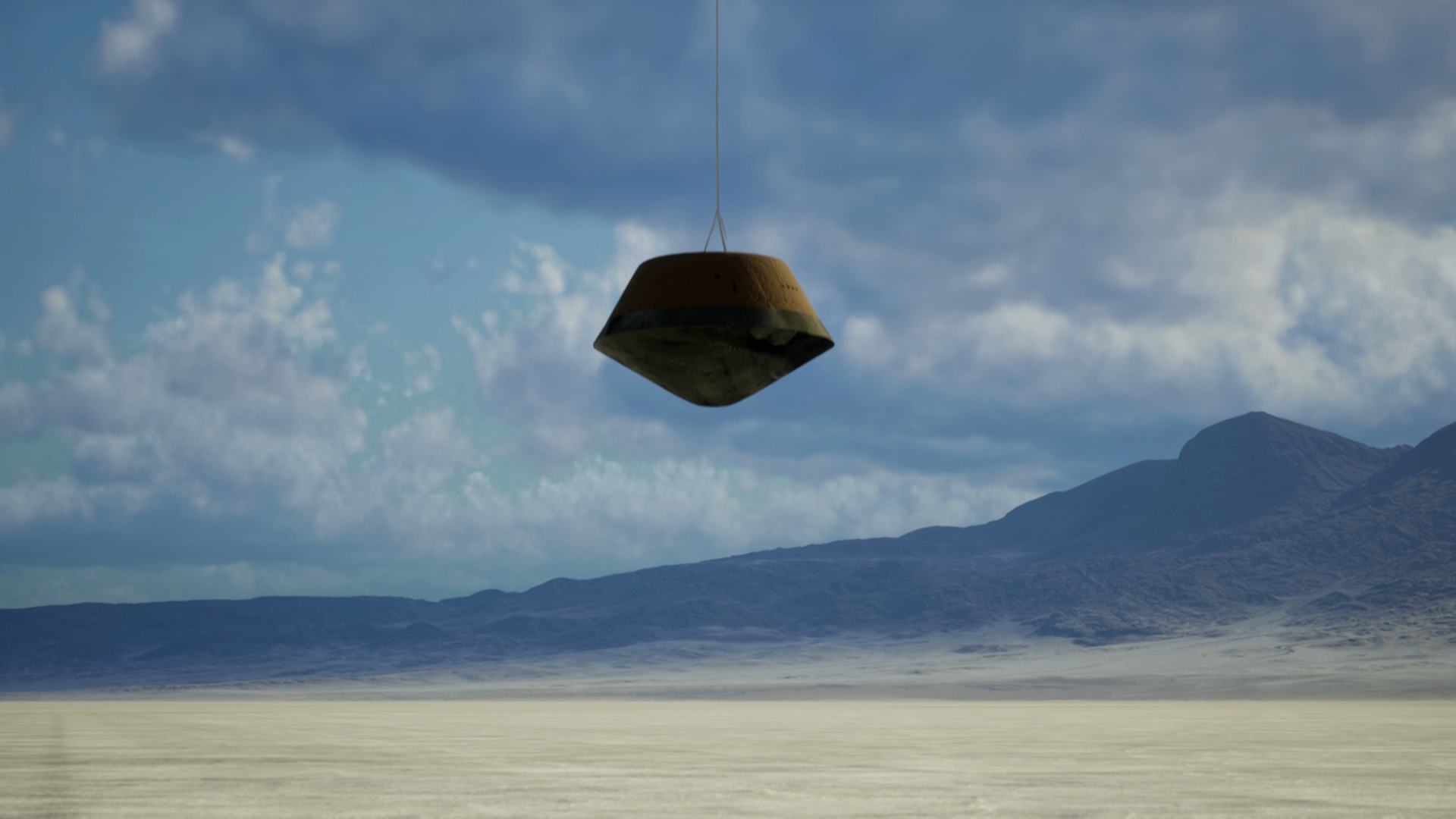
Cynthia: You’ve worked on so many cool projects for NASA missions. What do you consider some of your finest work and why? How did you approach conceptualizing, creating, and animating those terrains and environments?
Jenny: I’m very proud of my work on the OSIRIS-REx mission. It was my first project with Gaea so I had to learn very quickly how to get the most photo-realistic terrain I could, while learning how to write a landscape shader and while matching a real-world location. This piece wasn’t just going on YouTube, it would be part of a NASA broadcast and incorporated into science videos regarding the mission before the landing day and after.
I’m also incredibly proud of some later work I did on Uranus’ literary moons (so called because their names come from literature). We only have partial data of those moons from Voyager 2’s fly-by in the 1980s, so I used the data we had, imported that into Gaea, and used all the knowledge I’ve accumulated to interpret what the rest of the moons would look like. Gaea’s speed made it very easy to get those moon maps out to our scientist for review.
To conceptualize a project, I use all the references I can get. This means looking on my own, as well as getting data from scientists in the form of research papers and images. I also reference real world terrains as much as I can when appropriate. As you can imagine, not every bit of data we have for planets or moons is as crisp as U.S. Geological Survey data of Earth. So, I do as much research as I can with scientists to make educated interpretations. From there, I use Gaea to 1) create mesh assets that get textured in Substance, 2) make the tileable textures I need, and finally 3) create the floor terrain that I texture with my landscape shader in Unreal Engine (UE). Once those are in place, it’s easy to edit with a producer/scientist because the whole piece is modular. I’m essentially working in the same way a videogame environment artist would: creating a custom “asset zoo,” getting everything perfect, and then adding my camera and compositing elements.
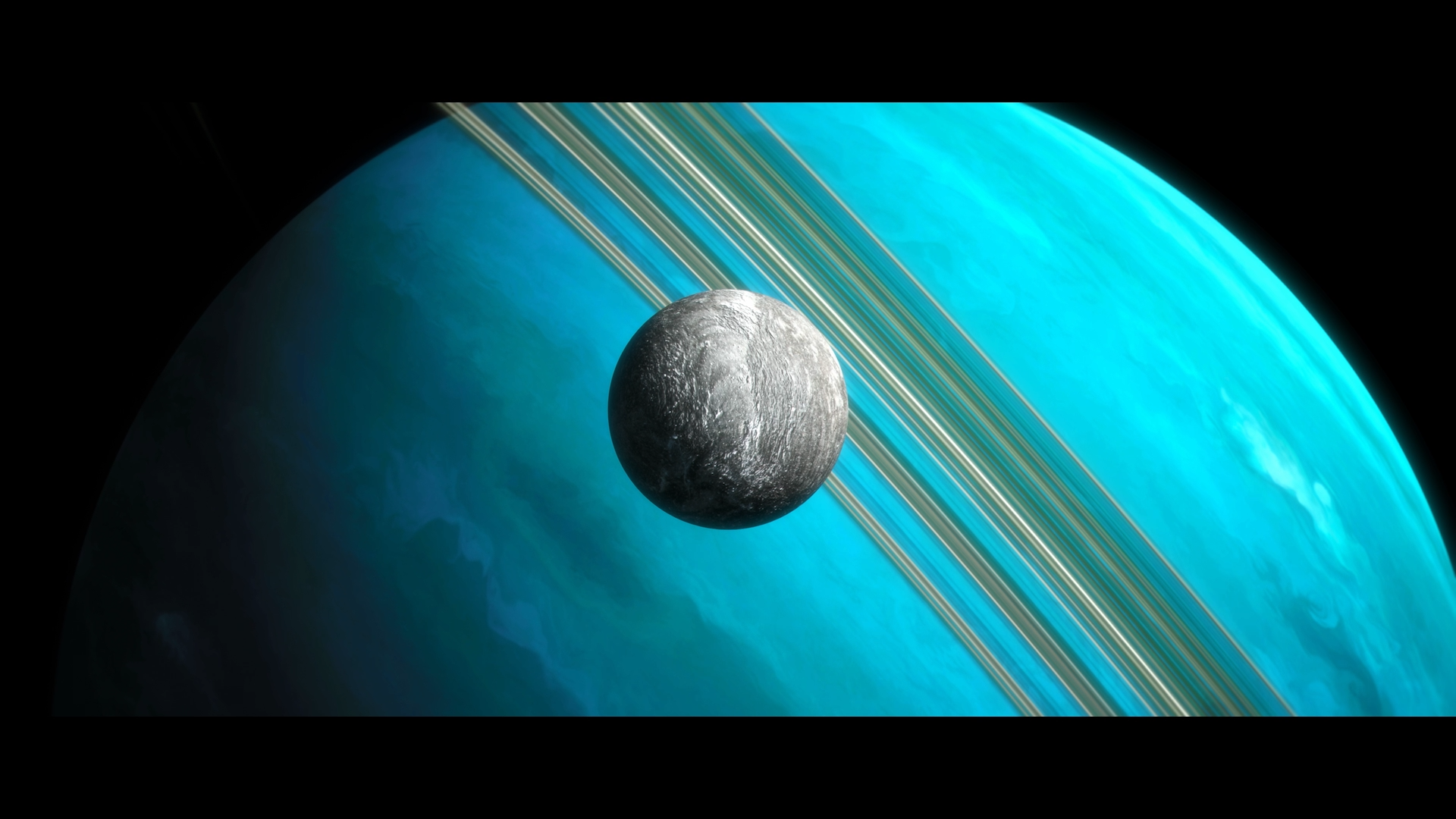
Cynthia: What role does Gaea play in your projects? And how does it impact or enhance your workflow?
Jenny: For me, it’s essential! It’s an amazing tool! Being able to create a mock-up terrain and share that with a scientist before I import into UE has been very helpful. It’s a great way to get feedback fairly quickly on shapes, erosion, and any other key properties we may be looking to show in our science animations. I can’t wait to start using the Unreal Engine bridge in Gaea 2 to make my workflow even faster.
Cynthia: What are some of your favorite tools and nodes in Gaea and why?
Jenny: I honestly love Wizard! I feel like the erosion/wear outputs it renders really tie my landscapes together when I apply them to my custom Autolandscape material instance. I also really love using the more “noisy” nodes like the Perlin node to add variety to my SatMaps.
Cynthia: You’ve used both Gaea 1 and the Gaea 2 beta. How has Gaea 2 already made a difference in the way you create terrains? And which features are you most looking forward to after the official release? There are many things to be excited about – our new Tiled Builds, ColorErosion, God Mode, and so much more! 😊
Jenny: Note: I can’t really comment on part 1 of this question since I’m using the beta with my personal copy of Gaea.
In the official release of 2.0, I’m so excited for all the new erosion features (I use those a lot) as well as the ability to make changes to a terrain without compromising the shape of the base terrain. And as I mentioned before, the bridge to Unreal Engine will become an essential part of my process.
Cynthia: As you know, QuadSpinner is committed to user experience - not only in design, but also in conveniences. Which conveniences have you enjoyed most and why? How have they affected the pace of your work and the overall design and rendering process?
Jenny: I love that Gaea “learns” my workflow and knows my most often used nodes. It speeds up my process so much by anticipating my next node. I know export times are about to get even more efficient, but the speed in Gaea currently has been a lifesaver! I’m used to long renders and it’s nice that with Gaea I don’t really have to anticipate that hurdle at all.
Cynthia: What are some of the upcoming projects in the pipeline? How will those stretch you as an artist? Do you have your sights on a larger role in the organization?
Jenny: Up next for me is continued work on DAVINCI, a future NASA mission to Venus. This is a big one because I’m creating a variety of terrains from scratch with little existing imagery, all interpreting what we might find on this mission. I hope it creates a feeling of excitement and inspiration for exploring these incredible planets we have in our own backyard. We can learn a lot about our own planet from what we observe in our own solar system. I’m very happy to be the resident environment artist for now and to continue refining those skills!
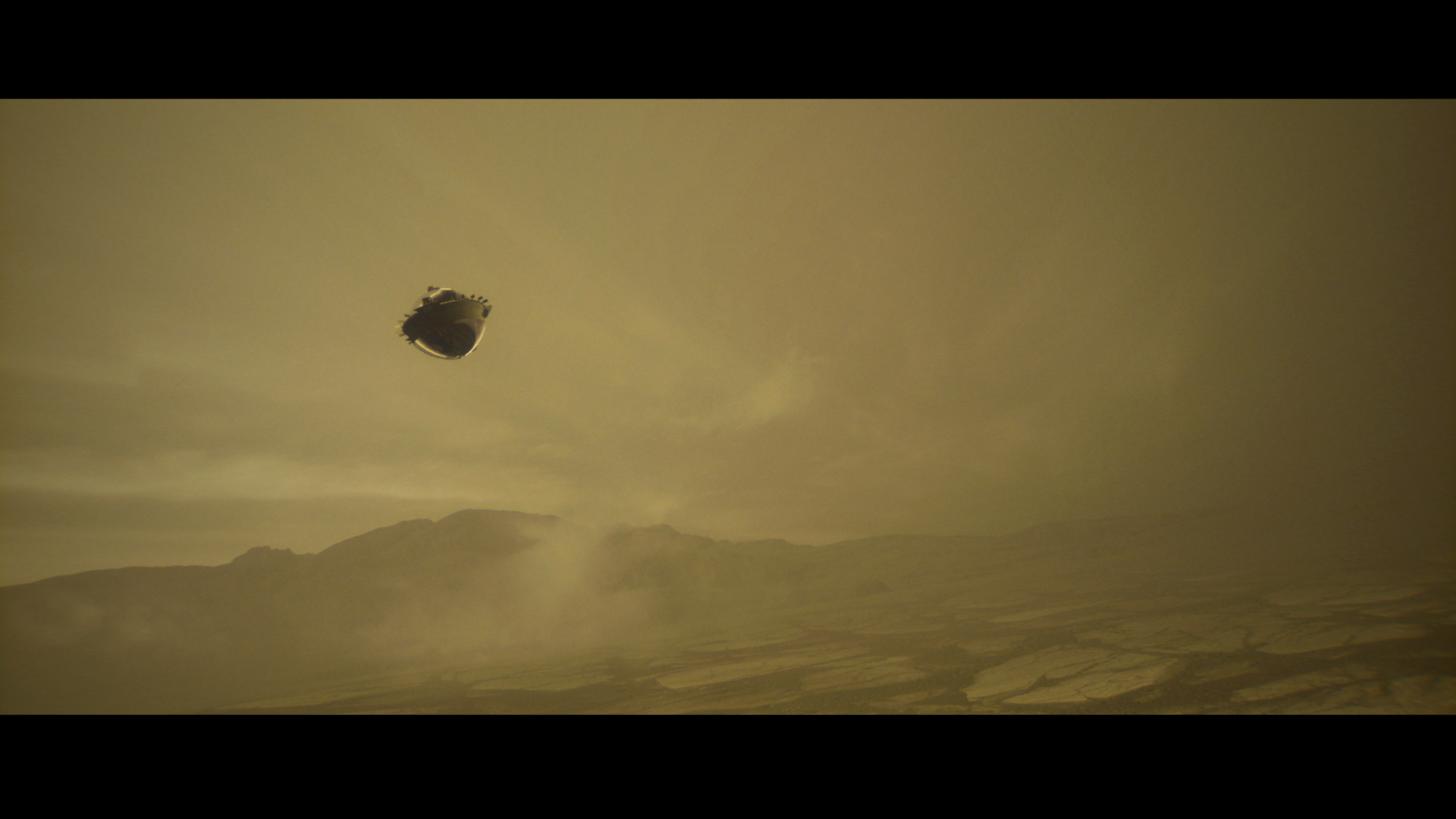
Cynthia: What are your greatest sources of inspiration - for your work and for life in general? Does getting out in nature play a role? And while you can’t go out into space on the weekends, where do you learn about those vast worlds beyond?
Jenny: Getting out in nature helps a lot. I’m always taking pictures of skies for lighting references, or unique natural textures I encounter that I might be able to port into Substance. But my biggest inspirations are absolutely film and videogames. Unreal Engine is used across both mediums so it’s hard for me not to analyze how something was done as I’m actively watching or playing something. I always look for behind-the-scenes information in the form of VFX breakdowns on YouTube/Art Station/Blu-ray extras, and artist lectures via Siggraph or GDC. I learn a lot about space from my coworkers’ projects, going to museums in the D.C. area, and watching documentaries and YouTube essays from respected scientists and researchers!
Cynthia: In your off time, what are your favorite activities and hobbies? How do you recharge your batteries?
Jenny: I love taking walks, exploring all the fantastic local restaurants near me, going into D.C. for a day trip, and playing videogames and watching movies with my husband. I also have a parakeet - I love spending time playing with her and teaching her new words.
Cynthia: What advice do you have for aspiring artists in multimedia and animation?
Jenny: My advice is to expose yourself to everything you can. Go to conferences, watch movies from all over the world, read, travel when you can, etc. I feel like inspiration is everywhere. I was introduced to animation at NASA because I went to a nerdy conference mainly for the anime and talks on the 40th Anniversary of the film series Alien. There were some NASA panels that I attended where I was exposed to the artist working at NASA. And thus began a 3-year journey of getting my foot in the door.
I would also say don’t shy away from reaching out to anyone. Send that DM on LinkedIn, send that email to your favorite artist. A vital skill in art is learning how to handle rejection, and on the opposite end, you never know if that email will change your life.
I’ll also add that amazing tools like Unreal Engine and Blender are free - something I emphasize to every group of kids I talk to. You can start creating amazing things now. And there’s a wealth of free information online. You don’t have to wait until college to get started. Conversely, it’s not a bad thing to begin as a hobbyist and just experiment when you have time!
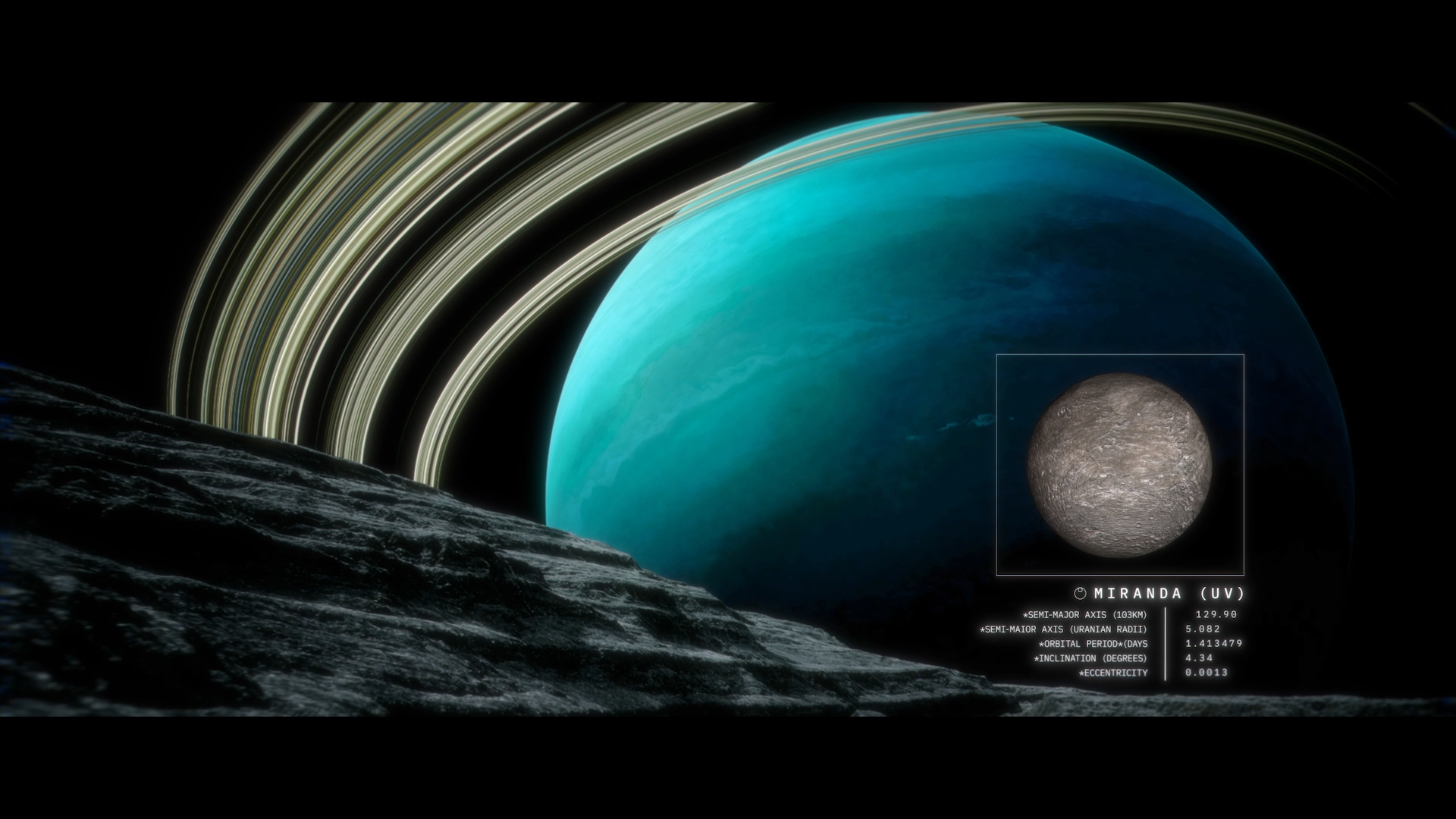
Cynthia: What else you would like to share with our users and readers?
Jenny: To the Gaea community, I’d love to see even more people sharing their workflows and processes! Do you make art in Unreal, do you texture your landscape in Cinema 4D, or make landscape stamps to use in Zbrush? I’d love to see an even bigger culture of sharing our breakdowns so we can all learn from each other. Beyond that, I can’t wait to see what all future iterations of Gaea 2 bring!
Thank you for all the thoughtful questions, Cynthia. I loved chatting!
Thank you, Jenny! You are both talented and a true delight. 😊
Any opinions expressed in this interview should be considered personal and are not to be considered the official views or opinions of NASA.
